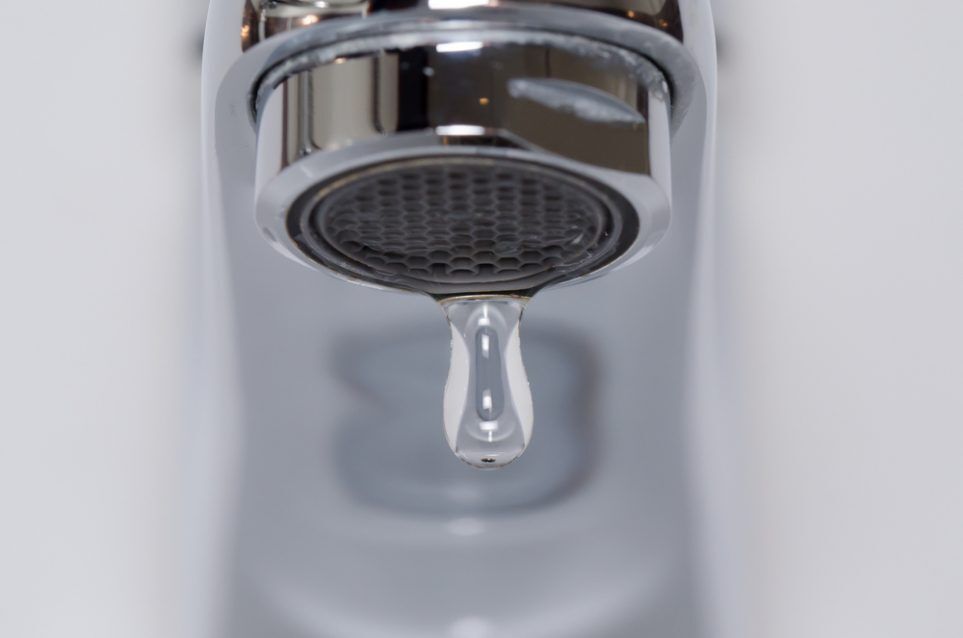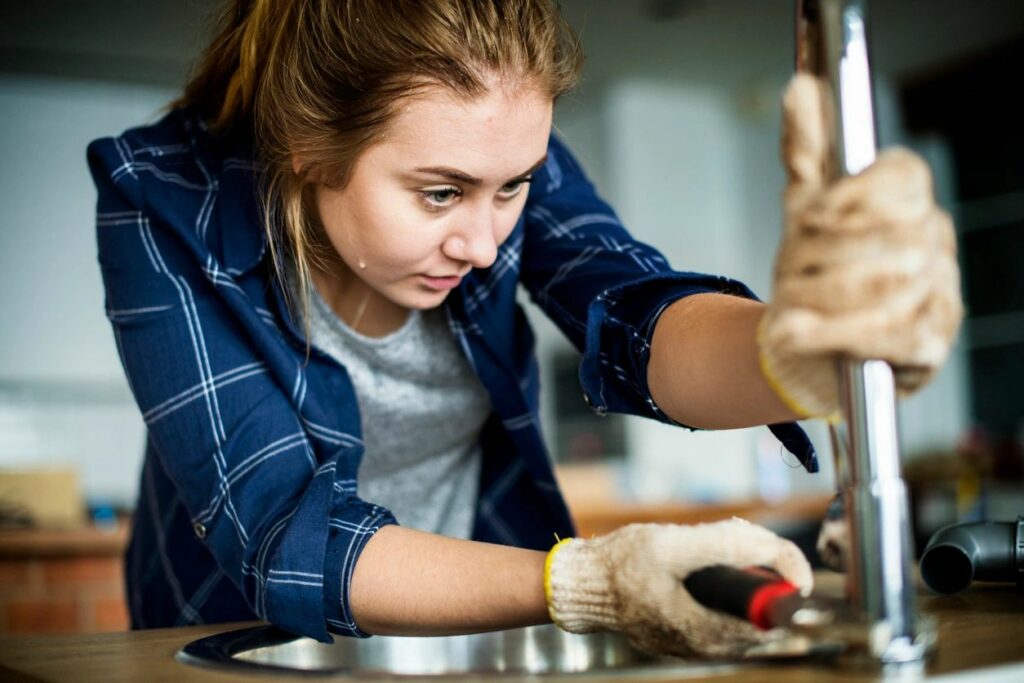Why It's Important to Repair a Broken Faucet
Why It's Important to Repair a Broken Faucet
Blog Article
The publisher is making a few great points relating to What Causes Leaky Faucets & How To Fix Them overall in the article which follows.

Trickling taps could look like a minor aggravation, but their impact exceeds simply the annoyance of the sound. From wasting water to sustaining unnecessary financial costs and health risks, overlooking a dripping tap can lead to various consequences. In this write-up, we'll explore why it's essential to resolve this usual house issue immediately and properly.
Wastefulness of Water
Ecological Influence
Trickling taps contribute significantly to water wastefulness. According to the Environmental Protection Agency (EPA), a single tap trickling at one drip per secondly can squander greater than 3,000 gallons of water each year. This not just pressures water sources but likewise influences environments and wildlife depending on them.
Financial Expenses
Enhanced Water Costs
Beyond the ecological influence, trickling faucets can inflate water expenses significantly. The accumulated wastage with time equates into greater utility costs, which can have been stayed clear of with prompt fixings.
Prospective Property Damage
Additionally, extended leaking can lead to damage to components and surfaces surrounding the faucet. Water buildup can create staining, corrosion, and even architectural concerns if left neglected, leading to additional repair prices.
Health and wellness Concerns
Mold and Mildew Development
The continuous existence of moisture from a leaking tap develops a perfect setting for mold and mildew growth. These fungi not only endanger indoor air high quality yet also position health and wellness risks, particularly for people with respiratory system problems or allergies.
Waterborne Conditions
Stagnant water in trickling faucets can come to be a breeding place for germs and other pathogens, raising the threat of waterborne conditions. Contaminants such as Legionella microorganisms grow in stationary water, potentially leading to severe illnesses when consumed or breathed in.
Do it yourself vs. Specialist Fixing
Pros and Cons of DIY Repair Work
While some may try to deal with a dripping faucet themselves, DIY repairs come with their own collection of difficulties. Without correct understanding and devices, DIY efforts can aggravate the issue or cause insufficient repairs, prolonging the issue.
Benefits of Working With a Professional Plumber
Employing an expert plumber makes certain that the underlying root cause of the dripping tap is addressed efficiently. Plumbers possess the know-how and tools to diagnose and fix faucet issues effectively, conserving time and decreasing the threat of more damages.
Step-by-Step Guide to Dealing With a Dripping Tap
Tools Called for
Before trying to fix a trickling tap, gather the essential devices, including a flexible wrench, screwdrivers, substitute components (such as washers or cartridges), and plumber's tape.
Typical Faucet Issues and Their Solutions
Determine the sort of tap and the specific concern causing the drip. Usual issues consist of worn-out washing machines, rusty valve seats, or damaged O-rings. Describe producer guidelines or online tutorials for detailed assistance on repairs.
Safety nets
Normal Upkeep Tips
To avoid dripping taps, carry out routine upkeep such as cleansing aerators, examining for leakages, and replacing worn-out components promptly. Furthermore, take into consideration installing water-saving tools or updating to a lot more efficient fixtures.
Relevance of Prompt Services
Dealing with leaking faucets as quickly as they're seen protects against further water waste and potential damages, inevitably saving both water and cash in the long run.
Influence On Property Value
Perception of Well-Maintained Residential Property
Preserving a residential property in good condition, consisting of resolving maintenance problems like dripping faucets, improves its viewed worth and worth among prospective buyers or tenants.
Influence on Resale Value
Characteristics with well-maintained plumbing fixtures, including taps, command higher resale values in the property market. Dealing with trickling taps can add to a favorable impact during residential property assessments and settlements.
Environmental Responsibility
Private Payment to Conservation
Taking duty for fixing trickling faucets lines up with broader efforts towards water preservation and environmental sustainability. Every person's activities jointly make a significant effect on maintaining valuable resources.
Sustainable Living Practices
By focusing on prompt fixings and embracing water-saving habits, people add to lasting living techniques that benefit both existing and future generations.
Verdict
Dealing with a trickling faucet surpasses plain benefit; it's a vital action toward saving water, lowering monetary prices, and guarding wellness and building. Whether with do it yourself fixings or expert aid, doing something about it to repair dripping taps is a little yet impactful way to advertise liable stewardship of sources and contribute to a healthier, a lot more lasting future.
How to Fix a Leaky Faucet: Step-by-Step Repair Guide
A leaky faucet may seem like a simple annoyance, but if it's not fixed promptly, that leak could cost hundreds to potentially thousands. From water damage to mold, mildew, and high water bills, even a tiny leak can be catastrophic if left unattended. Damage like this can even affect the overall value of your home, so it's important to take the right approach for leaky faucet repair. You may need the help of a plumber in some cases, but we've got a few tips you can try on how to fix a leaky faucet before calling the pros.
Four Faucet Types
When you're learning how to fix a leaky faucet, the first step is knowing what kind of faucet you're working with! There are four common types.
Cartridge Faucets
Cartridge faucets come in one- or two-handled varieties. In one-handled cartridge faucets, hot and cold water combines in a single cartridge. In the two-handled versions, hot and cold water are controlled separately and mixed in the faucet.
Ball Faucets
Ball faucets have a single lever you push up and down to adjust the pressure and rotate to change the temperature. A slotted metal ball controls the amount of water allowed into the spout.
Compression Washer Faucets
They're the oldest type of faucet, but they're still used in many homes — especially older ones. Compression faucets have two separate handles that, when turned, raise or lower the washer that seals a water valve. This valve stops water from flowing through the faucet when it is turned off.
Disc Faucets
Disc faucets rarely need to be repaired due to their maintenance-free design. The water flow is controlled by two discs — the upper one raises and lowers against a fixed lower disc, creating a watertight seal. If your disc faucet starts leaking, you may need to replace the seals or clean residue buildup from the inlets.
Fixing a Leaky Faucet
Step 1: Turn Off the Water
Whether you're learning how to fix a leaky bathtub faucet or how to fix a leaky kitchen faucet, always turn off the water supply to your working area when you're fixing a leak. The last thing you want is a flood added to your list of things to fix.
Look for the shutoff valves below your sink or around the tub and turn them clockwise to stop the water flow. If your faucet doesn't have shutoff valves, you may need to turn off the water for the whole house. Check to make sure it's off by turning the faucet on. If nothing comes out, you're ready to start the repair.
Step 2: Take Apart the Faucet
How you disassemble your faucet depends on the type of fixture you have. You can use a flathead screwdriver to remove the caps on top of the handle or handles for cartridge and compression faucets. Inside, you should see handle screws. Unscrew these with a screwdriver to remove the handle.
Disc- and ball-style faucets will typically have an inlet screw near the handle, and removing that will reveal the interior of the faucet.
Detach the Valve Stem
For cartridge- and compression-style faucets, you'll see the inner valve stem or cartridge once you remove the faucet handles. If you have a compression faucet, unscrew the brass valve stem. If you have a cartridge faucet, pull out the cartridge. If your cartridge has been in place for a while, it may require some tools or extra force to remove it due to mineral deposits.
Examine and Replace Parts
Once you've removed the parts, check them out to confirm what needs to be replaced. You may see corroded rubber washers, O-rings, stems, or cartridges. On a ball-style faucet, check the seats and springs for damage.
If you need to repair a leaky disc faucet, check the inlet and seals on the lower disc.
Once you determine what parts must be replaced, visit your local hardware store. Bring the damaged parts with you to ensure you can purchase the correct components to replace them.
Clean Valves and Faucet Cavity
If you've removed a stem or cartridge, you may notice mineral buildup in the faucet's threads. Use white vinegar to clean the valve seat by soaking it for a few minutes, then scrub it away with a soft toothbrush and rinse with warm water. You can also clean the interior of the faucet in the same way.
Reassemble the Faucet
Once your faucet is cleaned and the required parts have been replaced, it's time to reassemble it. Put the pieces back together and slowly turn the water supply back on. Doing this slowly is crucial because too much initial water pressure can damage the new hardware you've just installed.
https://homewarranty.firstam.com/blog/how-to-fix-leaky-faucet

Do you really like reading about 4 Common Reasons for a Leaky Faucet? Try leaving a review down the page. We will be pleased to hear your thinking about this review. We are looking forward to see you back again soon. Kindly pause to promote this content if you appreciated it. Thank you so much for your time invested reading it.
Report this page